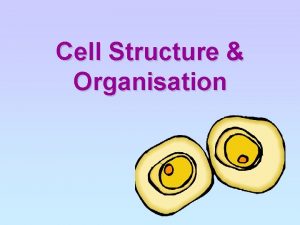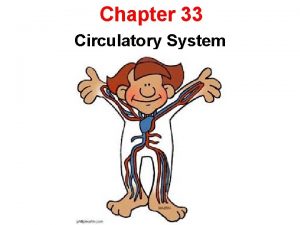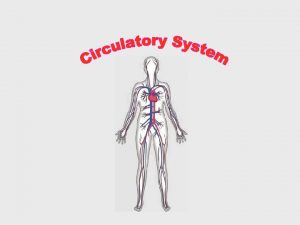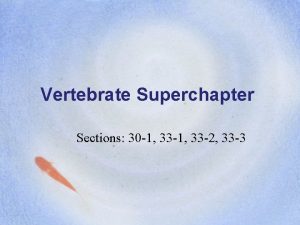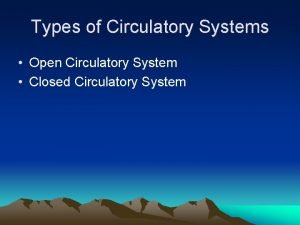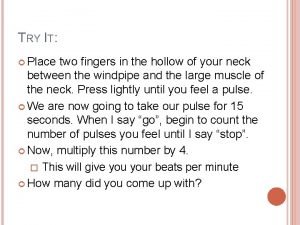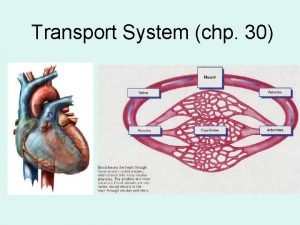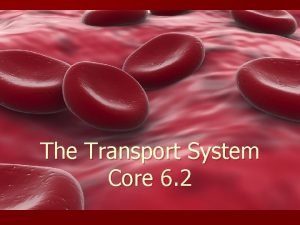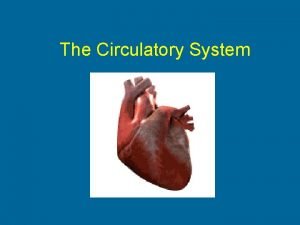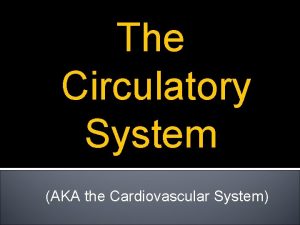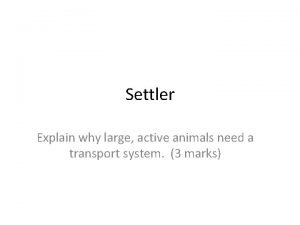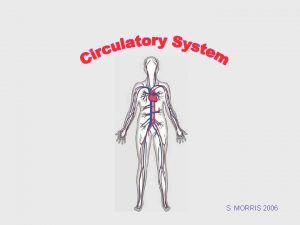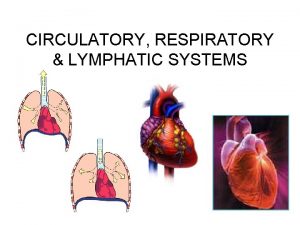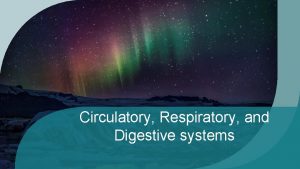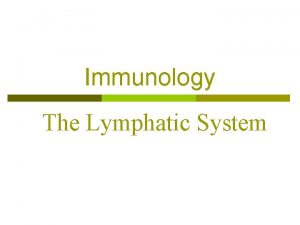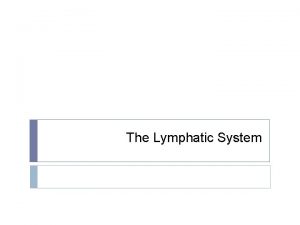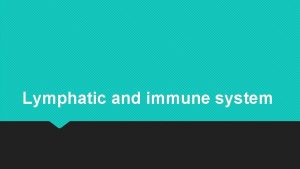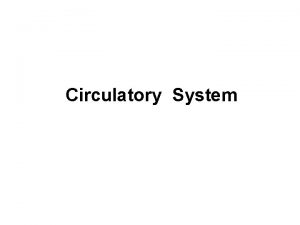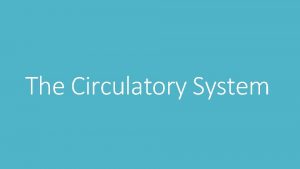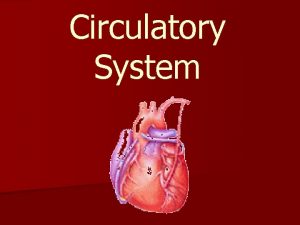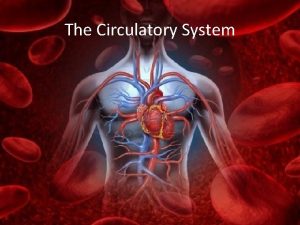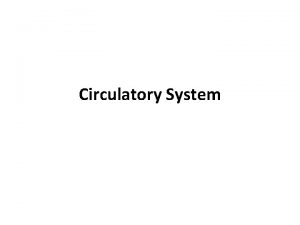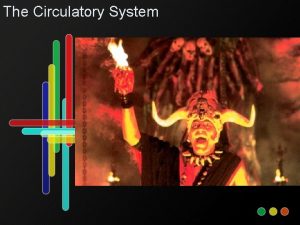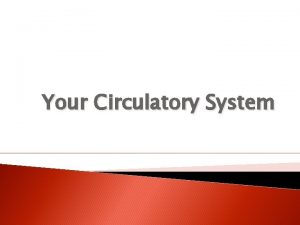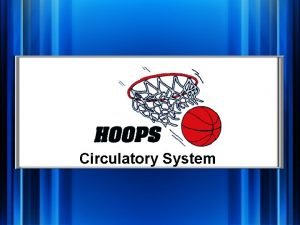NUTRITION Digestive System Respiratory System Circulatory System Lymphatic




















- Slides: 20

NUTRITION • Digestive System • Respiratory System • Circulatory System • Lymphatic System • Aparato excretor

NUTRICIÓN Types Autotrophic Heterotrophic Processes System Ingestion (intake) Digestive Transformation Respiratory Distribution Circulatory Elimination Excretory

DIGESTIVE SYSTEM PROCESSES • INGESTION (INTAKE) • TRANSFORMATION (DIGESTION) • ABSORPTION ORGANS • MOUTH • PHARINX • ESOPHAGUS • STOMACH • SMALL INTESTINE • LARGE INTESTINE • APPENDIX • RECTUM • ANUS GLANDS: • SALIVARY GLANDS • LIVER • GALL BLADDER • PANCREAS

DIGESTIVE SYSTEM

DIGESTIVE SYSTEM PROCESSES INGESTION (INTAKE) TRANSFORMATION (DIGESTION) ABSORPTION MOUTH STOMACH DUODENUM (first part of the small intestine) LARGE AND SMALL INTESTINE

DIGESTION FOOD CAN BE DIGESTED BY COMBINATION OF TWO METHODS: • Mechanical: In mechanical digestion, food is physically broken down into smaller fragments via the acts of chewing (mouth), churning (stomach) and segmentation (small intestine). • Chemical digestion: food is broken down by the action of chemical agents (such as enzymes, acids and bile)

MECHANICAL DIGESTION Chewing (Mouth) • Food is initially broken down in the mouth by the grinding action of teeth (chewing or mastication) • The tongue pushes the food towards the back of the throat, where it travels down the esophagus as a bolus • The epiglottis prevents the bolus from entering the trachea, while the uvula prevents the bolus from entering the nasal cavity Churning (Stomach) • The stomach lining contains muscles which physically squeeze and mix the food with strong digestive juices ('churning’) • Food is digested within the stomach for several hours and is turned into a creamy paste called chyme • Eventually the chyme enters the small intestine (duodenum) where absorption will occur

MECHANICAL DIGESTION Segmentation and peristalsis (Intestine) • Segmentation involves contractions of the circular muscles in the digestive tract. • Peristalsis involves rhythmic contractions of the longitudinal muscles in the gastrointestinal tract. Unlike peristalsis, segmentation actually can slow progression of chyme through the system.

CHEMICAL DIGESTION

CHEMICAL DIGESTION

1 st Stage: The Mouth • Chemical digestion: Saliva breaks down the poisaccharids into more simple molecules. • Mechanic digestion: teeth and molars crush the food.

Mechanical Digestion INCISORS (Cut) CANINES (Tear) MOLAR PREMOLARS (Crush and Crumble)

Swallowing

2 nd Stage: STOMACH

2 nd Stage: STOMACH

3 rd Stage: INTESTINE DUODENUM

3 rd Stage: INTESTINE

3 rd Stage: INTESTINE Absortion


 Digestive respiratory and circulatory system
Digestive respiratory and circulatory system Tiny air sacs at the end of the bronchioles
Tiny air sacs at the end of the bronchioles Circulatory system and respiratory system work together
Circulatory system and respiratory system work together Identify the cell
Identify the cell Chapter 33 circulatory and respiratory systems
Chapter 33 circulatory and respiratory systems Conductive zone vs respiratory zone
Conductive zone vs respiratory zone Lymphatic system vs endocrine system
Lymphatic system vs endocrine system Lymphatic system
Lymphatic system Circulatory system steps in order
Circulatory system steps in order Superchp
Superchp Lungfish heart
Lungfish heart Do clams have an open or closed circulatory system
Do clams have an open or closed circulatory system Sheep circulatory system
Sheep circulatory system Circulatory system function
Circulatory system function Closed circulatory system
Closed circulatory system 3 parts of circulatory system
3 parts of circulatory system 3 parts of the circulatory system
3 parts of the circulatory system Active animals
Active animals How circulatory system work
How circulatory system work What makes up the cardiovascular system
What makes up the cardiovascular system The actual exchange of gases occurs at the site of the *
The actual exchange of gases occurs at the site of the *



